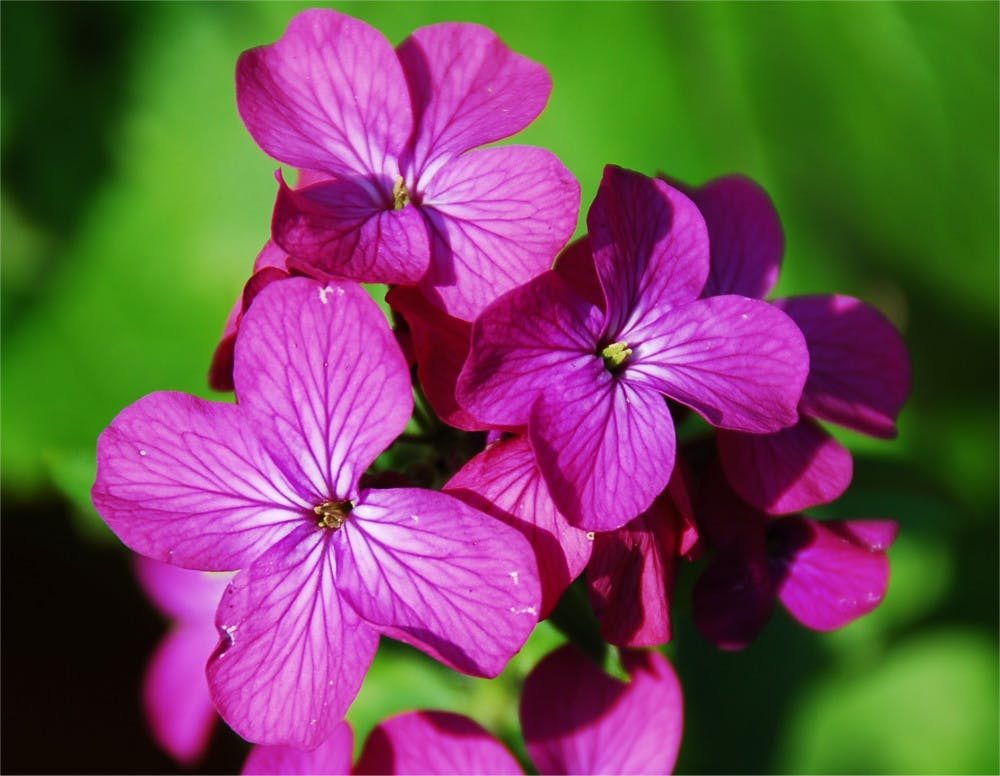By Anna Osatuke With its funky, translucent seed pods, Lunaria is more reminiscent of something you’d find washed up on the beach, not growing in a garden.
With its funky, translucent seed pods, Lunaria is more reminiscent of something you’d find washed up on the beach, not growing in a garden.
Better known to many as Honesty or the Money Plant, the large silver circlets produced by this plant can be found in crafts at arts and crafts fairs, as well as in floral arrangements.
Plants of the genus Lunaria are in the broccoli family. Similar to the radishes, cabbages, and garlic mustards that are grouped in with it, Lunaria has small, fleshy, four-petaled flowers and large, toothy leaves.
As a garden plant, the Money Plant provides a good bush of green vegetation. It usually won't pop out until other plants have lost their leaves, leaving the silvery seed pods left over to dangle in the wind.
Lunaria originally hails from Europe. It was one of the first plants to be planted in the US by settlers.
This is a good choice for shady corner beds that are protected from the wind and won’t detract from the focal point of your garden.
Lunaria can be either an annual or biennial plant. In theory, if you want to make it a permanent fixture in your garden, you’ll have to keep replanting it.
However, Lunaria does have some invasive qualities, and will self-sow readily. Lunaria does not do well with swampy ground. In Ohio specifically, cold may be enough of an issue that any biennial varieties of the plant will not survive the winter.
Lunaria is an interesting, and very beautiful plant to encounter. If you ever see these pretty silver disks you now will know where they came from!
Photo credits: Creative Commons
The Money Plant

